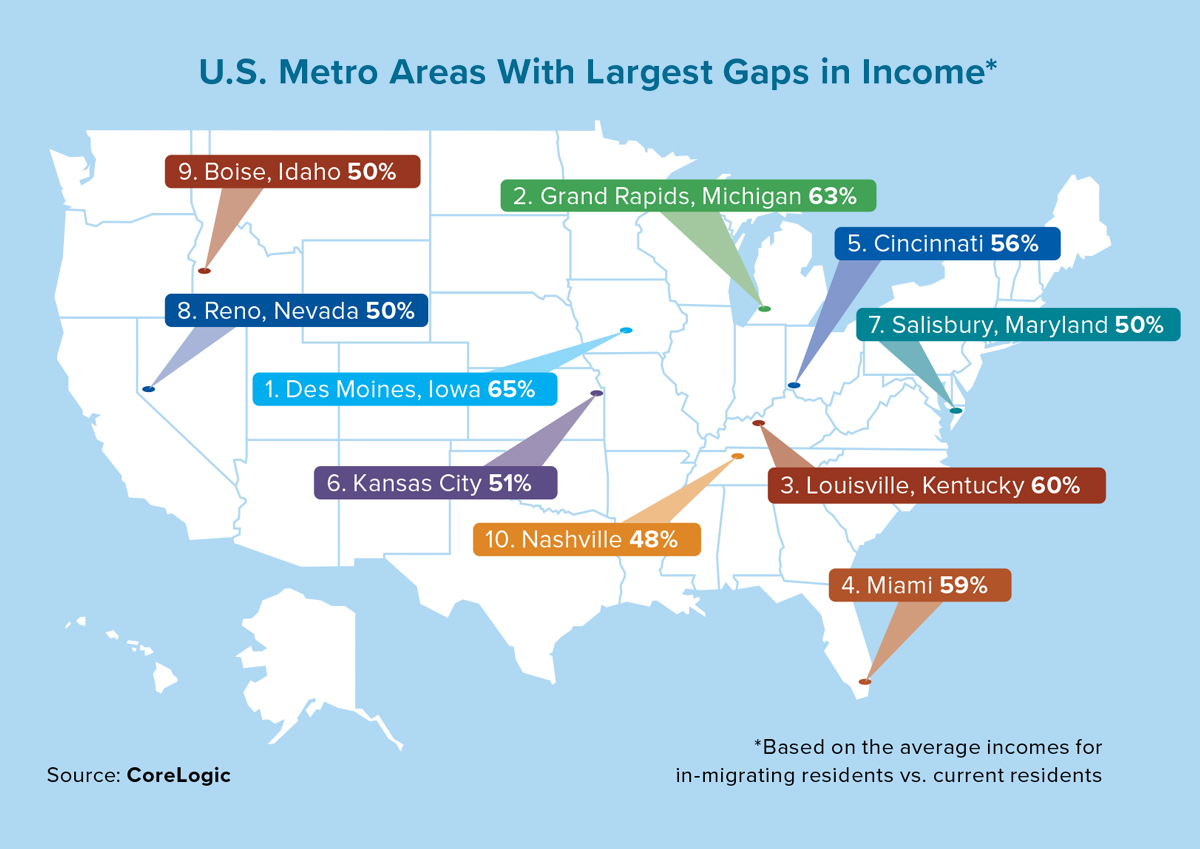Looking back at the many surprises of 2023, strength in home price appreciation was not something that was anticipated coming into the year, particularly after six straight months of declines at the end of 2022. But home prices rebounded during the 2023 spring homebuying season and amassed cumulative gains of 6% from January to October.
The CoreLogic Home Price Index (HPI) showed that national home prices reached new heights this past October, exceeding the previous year’s peak by 3%. What’s more, CoreLogic’s 2024 HPI forecast suggests a continued increase in prices that will average about 3% for the year.
Some markets saw even larger price gains over the course of last year. Miami, for example, has barely seen a dip in prices and ranked as the No. 1 large market for appreciation for 17 consecutive months. Prices in Miami increased by 11% last year for cumulative growth of 61% since the onset of the COVID-19 pandemic.
The rate of home price growth was unexpected given the loss of homebuyer purchasing power and declines in affordability brought on by higher mortgage rates. While a lack of existing homes for sale explains a lot of the pressure that drove home prices higher, a migration of higher-income households from more expensive markets to comparatively affordable markets has also played a role.
According to CoreLogic data, cross-metro migration remained elevated in 2023 after picking up pace at the onset of the pandemic. In 2019, 16% of homebuyers came from outside the metro area they purchased in. In each of the past two years, however, this share reached 23%. In other words, one in four homebuyers were from another region.
What’s more important is that the income of an in-migrating buyer tends to be higher (and sometimes a lot higher) than that of a local buyer. In Miami, in-migrating buyers have average incomes that are 59% higher than that of local buyers. The gaps in Phoenix and San Diego are 37% and 26%, respectively.
Although these three metros are interesting examples of already-pricey markets where in-migration added fuel to home price appreciation, the large income-gap differential exists in many other markets. This is particularly true of cities that tend to rank as more affordable and have recently seen considerable in-migration from other parts of the country. As the chart on this page shows, the income gap is at least 60% in Des Moines, Iowa; Grand Rapids, Michigan; and Louisville, Kentucky.
Many of the largest metros for out-migration also rank among the top markets for home equity accumulation. Los Angeles, San Jose, San Francisco, New York City and Seattle have some of the highest numbers of outbound mortgage applicants — and the average equity for a mortgaged home in these areas ranges from about $450,000 in New York to nearly $1.2 million in the Bay Area.
If an in-migrating homebuyer sold a home in one of these locations, they also had a considerable amount of cash for purchasing a new home. As CoreLogic data suggests, all-cash transactions have been on the rise. They comprised nearly 40% of all sales in fourth-quarter 2023, up from 33% in Q4 2019. ●
Author
-

Selma Hepp is a senior vice president and chief economist for Cotality, formerly CoreLogic, the nation’s largest provider of advanced property and ownership information, analytics and data-enabled services. Hepp leads the economics team, which is responsible for analyzing, interpreting and forecasting trends in real estate, mortgage and insurance. Prior to joining Cotality, she was chief economist and vice president of business intelligence for Pacific Union International, later acquired by Compass.
View all posts







